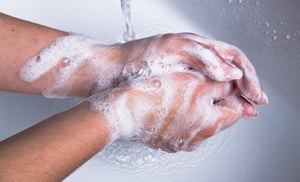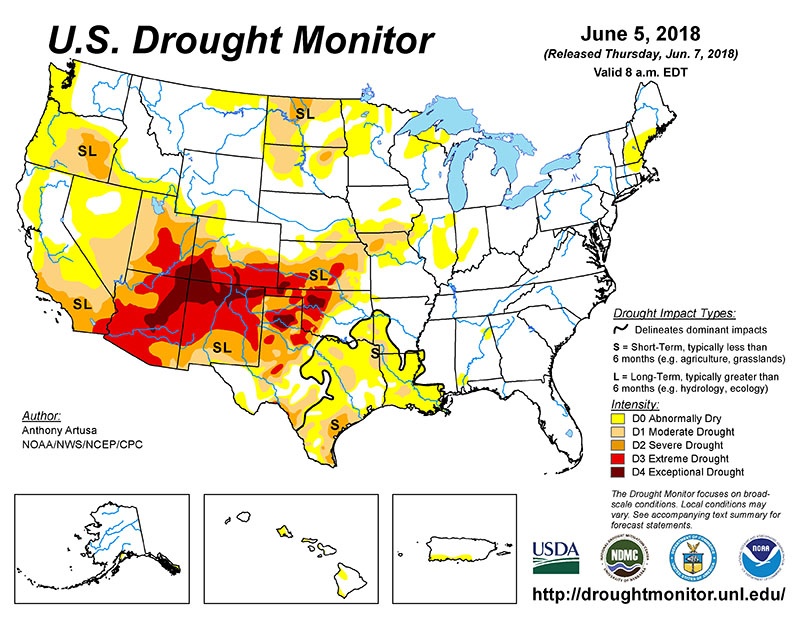You can conserve water and increase hygiene with touch-free restroom accessories, and you can also clean using products and processes that use less water. WAXIE offers solutions to save water and help with hand hygiene in the restroom with products that include automatic faucets and flushers, as well as waterfree urinals. In addition, check out the Watermiser™ Waterbroom and Custom Flow Control Valves for other practical solutions that save water.
What else can help reduce water usage?
Microfiber Technology - Using mops made of microfiber are another way to decrease water usage as less cleaning chemical or water is needed for them to remove dirt from a surface being cleaned.
A Twist on Traditional - Products like Rubbermaid's HYGEN Clean Water System that find a way to get the most out of the amount of water already being used.
Effects of Foam Hand Soap on Water Consumed During Typical Hand Washing
Foam format soap was tested against liquid soap to determine if water consumption during hand washing was  influenced by the format of the soap alone, and about their perceptions on manually actuated and touch-free soap dispensers. One hundred (100) participants were asked to wash their hands using both foam and liquid soaps, and then were asked to complete questionnaires.
influenced by the format of the soap alone, and about their perceptions on manually actuated and touch-free soap dispensers. One hundred (100) participants were asked to wash their hands using both foam and liquid soaps, and then were asked to complete questionnaires.
The study showed:
- 9.7% less water was used washing hands with foam soap versus liquid soap with a confidence level of 97%.
- Majority of consumers surveyed perceived the foam soap format to rinse more quickly than the liquid soap.
- 88% of consumers perceived touch-free dispensers as being more sanitary, and 51% perceived touch-free to be more convenient than other types of soap dispensers.
- 61% of consumers said they are more likely to wash their hands in public lavatories with a touch free dispenser
Using foam soap in a touch-free soap dispenser can reduce water consumption, promote better hand hygiene, and improve the perception of the lavatory as being more convenient and sanitary.
Water scarcity is defined by the Global Water Forum as the lack of sufficient available water resources to meet the demands of water usage within a region.
Water scarcity results from two basic underlying causes; 1) growth in demand for water outpacing infrastructure capacity and 2) physical scarcity of water due to drought or changing climate conditions. Both of these pressures on water supply are increasing in the United States. A World Resources Institute study concluded that world water withdrawals from surface waters has increased nearly twice as fast as global population growth. The USGS published a report in 2013 indicating that from 1900 to 2008, US ground water depletion has increased due to growth in water demand outpacing the capacity for natural replenishment, with a 25% increase in the rate of ground water depletion occurring between 2001 and 2008. As of August 5th, 2014 NOAA’s US Drought Monitor indicated that 34% of the 48 continuous United States were in Moderate or worse drought conditions, and 10% is in extreme or worse drought conditions, with impacts primarily in the southwest and western US. At the same time 58% of the state of California was experiencing exceptional drought, the harshest rating on the NOAA scale, with many areas in the state short by more than one year’s worth of rainfall. This has prompted the California State Legislature to enact emergency regulations in July 2014 that impose fines of up to $500 per day for citizens and institutions found not following the water conservation regulations. Click here to read the full report by Gene Topper Ph.D. and Thomas Marting B.S.ChE.



 influenced by the format of the soap alone, and about their perceptions on manually actuated and touch-free soap dispensers. One hundred (100) participants were asked to wash their hands using both foam and liquid soaps, and then were asked to complete questionnaires.
influenced by the format of the soap alone, and about their perceptions on manually actuated and touch-free soap dispensers. One hundred (100) participants were asked to wash their hands using both foam and liquid soaps, and then were asked to complete questionnaires. 
